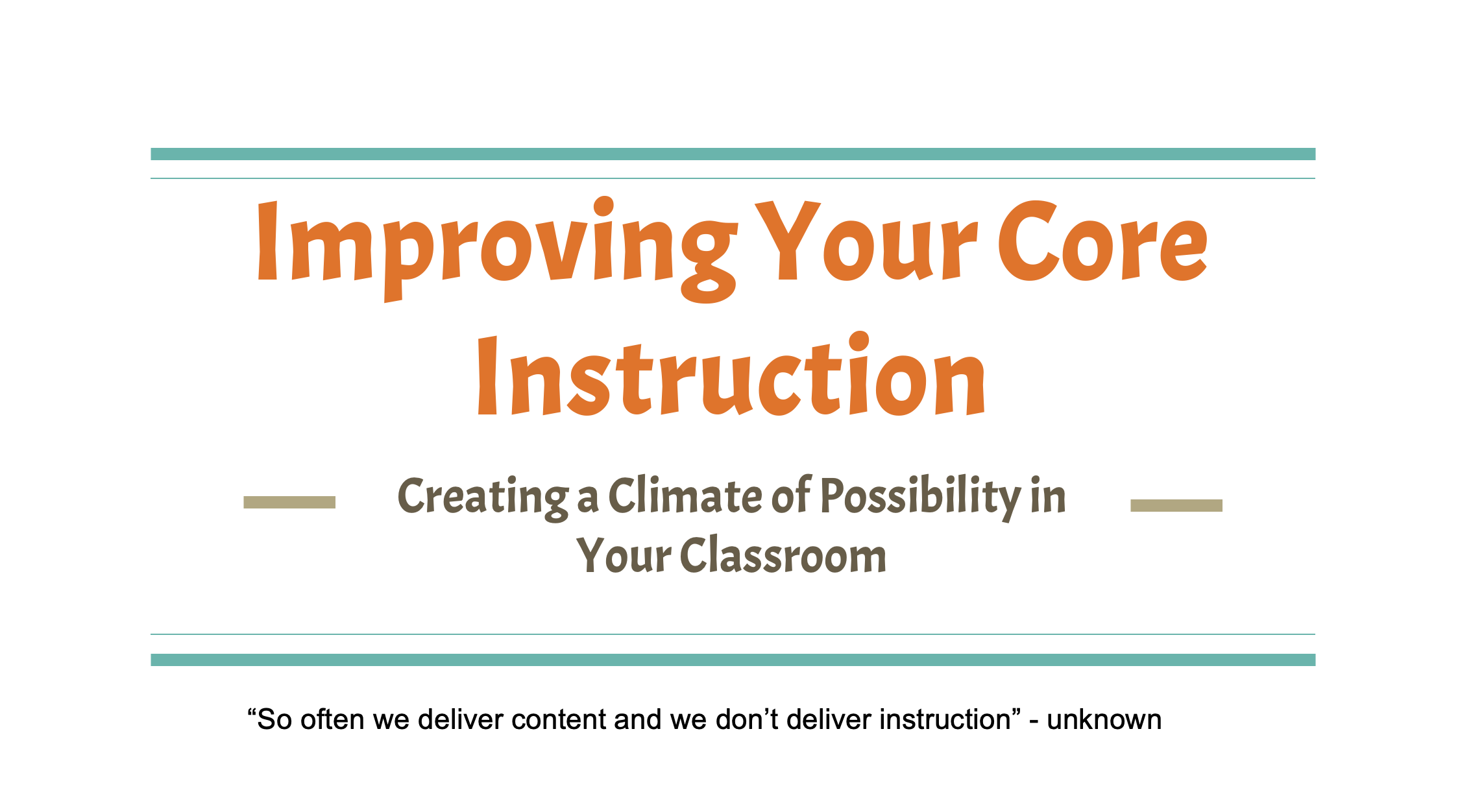Building Better Foundations: How to Strengthen Core Academics in Every Classroom
If you’re looking to boost student achievement and reduce the need for interventions, there’s one critical area to focus on: core academic instruction. In a Multi-Tiered System of Supports (MTSS), Tier 1 instruction is what every student receives—and it needs to be strong enough to meet the needs of most learners.
When core instruction is clear, responsive, and inclusive, fewer students fall behind. But when it’s inconsistent or ineffective, even the best Tier 2 and Tier 3 supports can’t fully catch students up.
Here are four research-based strategies for strengthening your core instruction—so all students have the opportunity to thrive.
1. Focus on Instructional Clarity
Instructional clarity means students understand what they’re learning, why it matters, and how they’ll know they’ve succeeded. Lessons should start with clear learning goals aligned to standards, include explicit modeling, and provide opportunities for guided and independent practice.
Too often, students are engaged in activities without knowing the purpose. Clear objectives and consistent language around success criteria help students stay focused and take ownership of their learning.
🔍 Try This: Start each lesson with a quick “I Can” statement check-in. Ask a few students to restate the goal in their own words, or write a quick reflection on what success looks like for the day’s objective. It builds clarity and student ownership.
2. Use Data to Drive Daily Decisions
Data isn’t just for identifying students who need intervention—it’s also key to improving Tier 1 instruction. Formative assessments, exit tickets, checks for understanding, and student work samples all provide insight into what students have learned and where they’re struggling.
When teachers use that data to adapt instruction—reteaching concepts, adjusting pacing, grouping students flexibly—they can meet more students’ needs without immediately moving to intervention.
🔍 Try This: Build routines for weekly team-based data discussions. Ask: Where did students struggle in this week’s lessons? What patterns do we see? What tweaks can we make to next week’s core instruction?
3. Differentiate with Purpose, Not Pressure
Differentiation can feel overwhelming, but it doesn’t mean creating different lessons for every student. It means anticipating learning variability and offering support and choice within whole-group instruction. When the core includes scaffolds—like visuals, graphic organizers, or sentence starters—all students can access grade-level content.
Differentiation also includes adjusting the level of support, not the rigor. The goal is to keep expectations high while providing the right on-ramps for learners.
🔍 Try This: Incorporate universal scaffolds into every lesson—then provide targeted support to small groups or individuals based on real-time needs. Consider student voice and choice in assignments to boost engagement.
4. Strengthen Adult Practice Through Coaching & PD
You can’t have strong instruction without strong instructional support for teachers. Professional development should be ongoing, job-embedded, and collaborative. When teachers work with coaches or colleagues to reflect on practice, try new strategies, and get feedback, instructional quality improves.
One-and-done PD sessions won’t create lasting change. Instead, prioritize coaching cycles, PLC time, and content-focused collaboration that helps teachers apply learning directly to their classrooms.
🔍 Try This: Use short classroom walkthroughs or video reflections tied to core instructional goals. Follow up with coaching conversations that focus on strengths and one next step.
The Bottom Line
Core instruction is the heart of MTSS—and when it’s working well, most students get what they need before intervention is even necessary.
By focusing on instructional clarity, data-informed decisions, purposeful differentiation, and teacher development, schools can build strong academic foundations for every learner.
Start with Tier 1. Strengthen the core. And watch your entire system become more responsive, inclusive, and effective.


